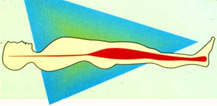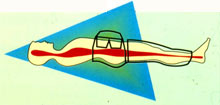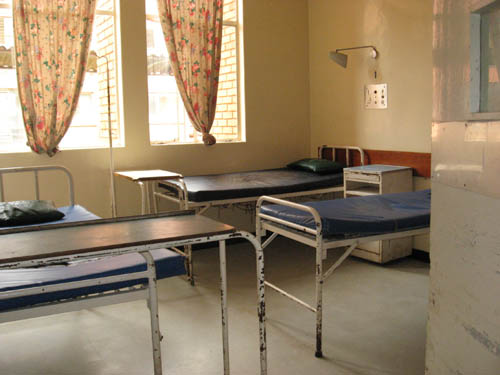A friend just left San Francisco for her second “tour of duty” in Zambia, working for UCSF’s Department of Obstetrics, Gynecology and Reproductive Sciences, which develops a low-tech first-aid device for hemorrhaging pregnant women called LifeWraps. I was impressed and horrified by her efforts combating the high frequency of death and disability around childbirth. More after the jump…
The leading cause of maternal mortality (deaths from pregnancy and childbirth related complications) is obstetric hemorrhage in which a woman bleeds heavily, most often immediately after giving birth… A woman can bleed to death in two hours or less, and in rural areas, where hospitals may be days away, this leaves little hope for women suffering from hemorrhage. Also, in places that have limited resources, clinics and hospitals might not have the staff or supplies needed to save a woman’s life. Women die waiting for the treatment they need.
The LifeWrap is a simple, neoprene and Velcro device that looks like the bottom half of a wetsuit, cut into segments. The compression effect of the garment reverses shock by returning blood from the lower abdomen and legs back to the heart, lungs and brain. This restores the woman’s consciousness, pulse and blood pressure.


It is simple, re-usable, and costs under $5.00 per use. Here is a list of LifeWraps’ current campaigns, in case you’d like to consider supporting them as a gift this holiday season.
There is a long history of compression suits being used to save lives, going back to 1903:
Dr. George Crile placed in an inflatable rubber suit patients who had to be operated on in a sitting or semi-sitting position. He found that the suit prevented postural hypotension, or low blood pressure resulting from the patient’s being in a sitting position. Just a few years later Dr. Crile reported successful use of his inflatable suit on a patient who was in apparently irreversible hemorrhagic shock. This was a significant event in the days before transfusions of blood and infusions of blood volume replacement fluids. But Dr. Crile’s inflatable rubber suit developed leaks, so it was abandoned.
The idea was not abandoned, however. During the Second World War aviators wore up-to-date versions of Dr. Crile’s suit to prevent blackouts during high speed aerial maneuvers and recoveries from steep dives. Called G-suits (after antigravity), these garments prevented the pooling of blood in the lower extremities; thus they prevented unconsciousness.
It underwent transformation and was used in the ’70s in the Vietnam war for resuscitating and stabilizing soldiers with traumatic injuries before and during transportation. In the ’90s a non-inflatable version was developed, which led to the current LifeWrap design, known generically as the non-pneumatic anti shock garment or NASG.
